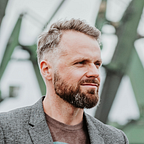How Brutal Jet Lags Taught Me to Sleep Better All Year Long
You don’t have to live like a monk, but it sure does help.
I’ve been going back and forth between San Francisco and Amsterdam for the last 7 years. For those of you not keeping track, there is a massive 9-hour time difference between the two cities. The jet lag is no joke.
While it didn’t bother me at first, over the years my trips became more frequent and jet lags harder to ignore. It wasn’t long before I started dreading every trip, not just for flying economy at 6'1" for 11 hours straight, but, increasingly, for the lack of sleep and the lost productivity in the days that followed.
Naively, I thought I’d somehow just get used to it all. Instead, with every flight I took it felt like the jet lag only stretched out longer. And just as I’d be settling down again, it would soon be time for yet another trip. Ugh.
Luckily, internet came to the rescue. While listening to podcasts I stumbled upon the likes of Matthew Walker, Andrew Huberman, and Satchin Panda, who opened the door for me to a better understanding of sleep science. I immediately started putting their teachings into practice, testing every bit of advice I came across.
It’s been a long journey but after nearly 2 years of trial and error I am starting to get consistently great results now. It takes me about 3 days to get to a fully normal state, compared to about 10 days initially. Within this timeframe I am no longer feeling fatigued during the day and get around 7 hours of quality sleep at night.
The techniques I found to work best so far are:
- Take no coffee, tea or alcohol ±3 days before and after the flight. Definitely not during the flight.
- Keep regular sleeping hours ahead of the trip. The earlier you wake up normally the better chance you’ll fall asleep on the plane.
- If you can’t fall sleep on the plane, act as if you’re asleep for at least 60% of the time (use a well-fitting eye mask and ear-plugs).
- After landing spend plenty of time in natural sunlight (especially at dusk and dawn, but also during the day to stay awake).
- Try not to nap after arrival at your destination. If necessary, lie down for only up to 30 minutes and not later than 1pm.
- Stick to your regular meal times. Have your last (and ideally smallest) meal of the day not later than 4 hours before bedtime.
- Dim the lights in the evening. If dozing off too early keep bright lights turned on for a bit longer.
- Exercise first thing in the morning, ideally outdoors and at dawn. Go for a walk at dusk. Continue for ±5 days.
- Take cold showers in the mornings, hot showers in the evenings.
- Stay hydrated throughout the process: drink plenty of water, ideally mixed with electrolytes.
It’s a lot, I know. Maybe not exactly the same as living like a monk, but pretty close.
I am more than happy to make these sacrifices, though. In fact, this has become my daily routine now. I stopped having alcohol altogether and only drink decaf these days. I also religiously exercise in the mornings and take cold showers after my workouts. It helps me sleep better throughout the year, even when I’m not traveling.
I do this because, it turns out, the key to beating jet lag isn’t maintaining good sleep hygiene only when you travel, but doing it all year long. It helps you sleep better overall and gets you in the groove of things before you even step on the plane. So when you’re about to get on that long-haul flight again, it’s business as usual.
This is not to say you have to start doing all of it tomorrow. But adopting just a couple of these techniques will be enough to make a difference. Pick and choose whatever fits your lifestyle best at the moment. And who knows, maybe over time you’ll get hooked on it just like I did. Living like a monk is not so bad after all.
